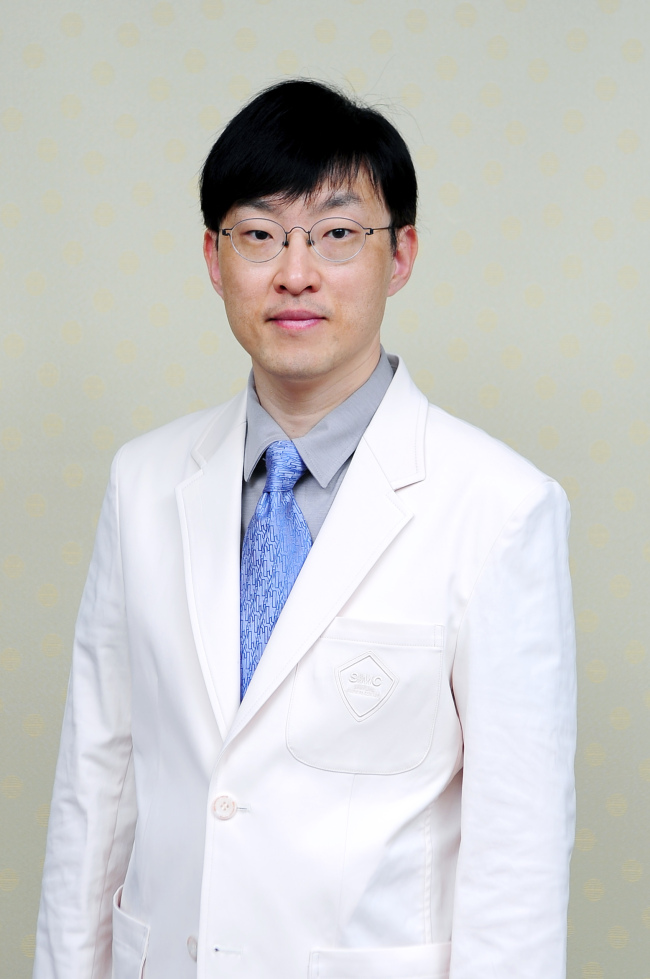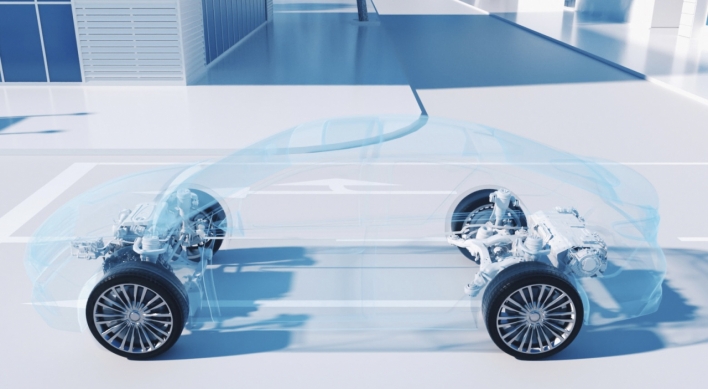Heart attack has been the No. 1 killer in the world for the last decade and deaths from the disease are still on the rise. As the human heart works continuously during one’s lifetime, a healthy coronary artery, which supplies it with blood, is vital for a healthy heart. As people age, the arterial wall gradually thickens and hardens, which is called atherosclerosis. Enlarged atherosclerotic plaque can become unstable and rupture suddenly. A blood clot is formed in ruptured plaque within minutes and clogs the bloodstream in the coronary artery.

The formal medical term for “heart attack” is “acute myocardial (heart muscle) infarction (damage caused by a lack of oxygen supply).” The symptoms of acute myocardial infarction vary and are often vague. Thus, diagnosis is difficult to make and often missed if based only on the symptoms. Chest pain has been regarded as a typical symptom, but any bodily discomfort from neck to abdomen or back may be caused by acute myocardial infarction. Shortness of breath (dyspnea), excessive sweating (diaphoresis), a feeling of fainting, syncope or loss of consciousness, or gastrointestinal symptoms including nausea or vomiting are not uncommon. Unfortunately, even sudden cardiac death without any prodromal symptoms can be the first sign of acute myocardial infarction. “Sudden cardiac death,” the formal medical term for the Korean description “simjangmabi,” is mostly the result of fatal arrhythmia accompanying acute myocardial infarction. On the other hand, acute myocardial infarction is a phantom menace. One in 4 nonfatal acute myocardial infarctions is silent and unnoticed.
Patients with suspected acute myocardial infarction need immediate medical attention, and should be treated as soon as possible to reduce the extent of heart muscle damage and complications. The first-line tests are an electrocardiography (ECG, or EKG) and a blood test for troponin, which is a biomarker for damaged heart muscles. If there is ambiguity, a variety of imaging tests are used to determine the diagnosis. The most urgent problem is fast life-threatening and chaotic heart rhythm (arrhythmia named ventricular fibrillation or ventricular tachycardia) which practically stops the pumping function of the heart. The human brain is very vulnerable to the interrupted blood supply and is damaged irreversibly within just a few minutes. The victim seldom survives without immediate defibrillation, which is delivering electrical shock to reset functional heart rhythm. A clogged artery should be reopened to save viable heart muscles using mechanical devices (percutaneous coronary intervention; PCI, which uses a balloon and stent) or a drug (thrombolysis) that activates blood clot destruction if it can be performed at the hospital in a timely manner. If the heart is severely damaged, surgical treatment by a cardiovascular supporting device such as ECMO may be required to fix complications or substitute the failing heart.
Anyone who feels abnormal discomfort from the neck to upper abdomen, shortness of breath, or fainting needs to be examined by medical professionals, especially if he or she has cardiovascular risk factors. If the symptom is severe or highly suggests acute myocardial infarction, the patient should be transferred to the emergency department immediately. No self-medication can replace the appropriate management by trained medical professionals. Unfortunately, a substantial number of patients collapse before arrival at the hospital and do not survive. If you find such an unlucky victim, call 119 first and try chest compression only by cardiopulmonary resuscitation. These days, an AED (automated external defibrillator) is installed in major urban locations so that ordinary people can use it to find and treat fatal arrhythmia.
The best way to prevent acute myocardial infarction is maintaining a healthy lifestyle and managing medical conditions. Examples are smoking cessation, physical exercise, weight control and proper medications for high blood pressure, diabetes mellitus and high lipid levels. Awareness and knowledge of cardiovascular risk is very important to reduce the lifelong risk of acute myocardial infarction. Also, a basic CPR course and knowledge of AED is worth learning. It gives you marvelous power to save your neighbors, friends or family members in the future if need be.

The formal medical term for “heart attack” is “acute myocardial (heart muscle) infarction (damage caused by a lack of oxygen supply).” The symptoms of acute myocardial infarction vary and are often vague. Thus, diagnosis is difficult to make and often missed if based only on the symptoms. Chest pain has been regarded as a typical symptom, but any bodily discomfort from neck to abdomen or back may be caused by acute myocardial infarction. Shortness of breath (dyspnea), excessive sweating (diaphoresis), a feeling of fainting, syncope or loss of consciousness, or gastrointestinal symptoms including nausea or vomiting are not uncommon. Unfortunately, even sudden cardiac death without any prodromal symptoms can be the first sign of acute myocardial infarction. “Sudden cardiac death,” the formal medical term for the Korean description “simjangmabi,” is mostly the result of fatal arrhythmia accompanying acute myocardial infarction. On the other hand, acute myocardial infarction is a phantom menace. One in 4 nonfatal acute myocardial infarctions is silent and unnoticed.
Patients with suspected acute myocardial infarction need immediate medical attention, and should be treated as soon as possible to reduce the extent of heart muscle damage and complications. The first-line tests are an electrocardiography (ECG, or EKG) and a blood test for troponin, which is a biomarker for damaged heart muscles. If there is ambiguity, a variety of imaging tests are used to determine the diagnosis. The most urgent problem is fast life-threatening and chaotic heart rhythm (arrhythmia named ventricular fibrillation or ventricular tachycardia) which practically stops the pumping function of the heart. The human brain is very vulnerable to the interrupted blood supply and is damaged irreversibly within just a few minutes. The victim seldom survives without immediate defibrillation, which is delivering electrical shock to reset functional heart rhythm. A clogged artery should be reopened to save viable heart muscles using mechanical devices (percutaneous coronary intervention; PCI, which uses a balloon and stent) or a drug (thrombolysis) that activates blood clot destruction if it can be performed at the hospital in a timely manner. If the heart is severely damaged, surgical treatment by a cardiovascular supporting device such as ECMO may be required to fix complications or substitute the failing heart.
Anyone who feels abnormal discomfort from the neck to upper abdomen, shortness of breath, or fainting needs to be examined by medical professionals, especially if he or she has cardiovascular risk factors. If the symptom is severe or highly suggests acute myocardial infarction, the patient should be transferred to the emergency department immediately. No self-medication can replace the appropriate management by trained medical professionals. Unfortunately, a substantial number of patients collapse before arrival at the hospital and do not survive. If you find such an unlucky victim, call 119 first and try chest compression only by cardiopulmonary resuscitation. These days, an AED (automated external defibrillator) is installed in major urban locations so that ordinary people can use it to find and treat fatal arrhythmia.
The best way to prevent acute myocardial infarction is maintaining a healthy lifestyle and managing medical conditions. Examples are smoking cessation, physical exercise, weight control and proper medications for high blood pressure, diabetes mellitus and high lipid levels. Awareness and knowledge of cardiovascular risk is very important to reduce the lifelong risk of acute myocardial infarction. Also, a basic CPR course and knowledge of AED is worth learning. It gives you marvelous power to save your neighbors, friends or family members in the future if need be.

By Choi Jin-ho
Choi Jin-ho is a doctor at the department of emergency medicine at Samsung Medical Center and a professor at Sungkyunkwan University’s School of Medicine. ― Ed.








![[Kim Seong-kon] Democracy and the future of South Korea](http://res.heraldm.com/phpwas/restmb_idxmake.php?idx=644&simg=/content/image/2024/04/16/20240416050802_0.jpg&u=)









![[Today’s K-pop] Zico drops snippet of collaboration with Jennie](http://res.heraldm.com/phpwas/restmb_idxmake.php?idx=642&simg=/content/image/2024/04/18/20240418050702_0.jpg&u=)